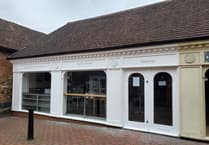WAVERLEY Borough Council earn an average of 16.6 per cent less than male employees, according to gender pay gap figures released last week.
The gap exists despite there being twice as many women working for the council than men, with 67 per cent of the council’s 443 employees being women.
Women are generally employed in the lower-paid jobs and all but one of the highest-graded posts were filled by men.
The difference in bonus payments was particularly marked, with men being paid an average of 90.5 per cent more than women, despite there being more bonuses paid to women.
In fact only seven people received bonuses, five of them women and two men.
One of the men received a ‘golden hello’ payment, but chief executive Tom Horwood stressed it happened to be to ‘a male in this year,’ but it would change ‘from year to year’.
Mr Horwood added: “As part of our ambition to have skilled, talented, committed, diverse and high-performing workforce, we are developing a new human resources strategy that will include plans to monitor and address issues that arise from our current gender pay gap.”
While the bonus gap is not so marked at Surrey County Council – in 2016-17 women received on average bonuses of £625.13, almost £90 less (12.6 per cent) than the average male received – the average pay for women has lagged behind their male counterparts by 17.3 per cent.
Again there are far more women than men working for the council – 8,366 out of a total of 11,411, and the lowest 50 per cent of wage earners are predominantly women (82.1 per cent).
According to a council report those women tend to be in jobs such as personal care, catering and cleaning, many of them part-time and generally at the lowest pay grades.
The report seeks to explain this saying: “Historically, there is still a legacy of gender occupational segregation, where women still predominantly apply for and occupy social care roles; this is slowly changing”.
The council said the difference in pay could be attributed to ‘the patterns and types of work undertaken by men and women working’ for the council and that it was ‘encouraging flexibility, and challenging assumptions about traditional ways of working and occupations,’ taking account of the needs of the work, customers and employees.
But that is not the case at Surrey Choices which provides health and social work activities and which bucks the trend.
There are approximately four women employed for every one man, with women being paid on average 2.3 per cent more than men in 2016-17.
Women working for NHS trusts in Surrey fared worse however.
Frimley Health NHS Foundation Trust, where more than three-quarters of the staff are women, has a gender pay gap of 18.9 per cent average hourly earnings in favour of men.
And it is a similar story at Guildford’s Royal Surrey County Hospital where women are paid on average 29.2 per cent less than men per hour.
At South East Coast Ambulance Service NHS Foundation Trust women earn on average eight per cent less than men and women at Surrey Police earn an average of 8.8 per cent less than men.
The news came in the same week that more than 1,500 companies have failed to report their gender pay gap figures, according to the Equalities and Human Rights Commission, which was tasked by the Government to comile the figures.



